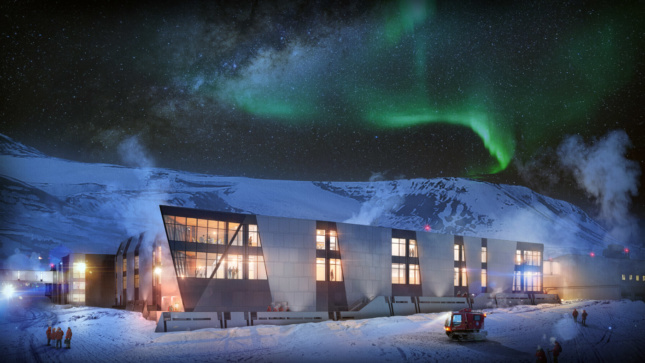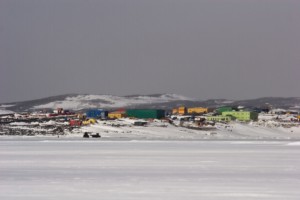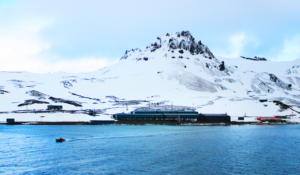Extreme architecture, much like science, is a collaborative and evolving effort—imagine coordinating contractors in an environment that can swing between 40 degrees Fahrenheit in the summer to 40 below in the winter. Enter Colorado’s OZ Architecture, which has master planned and partially designed a research base for the U.S.’s National Science Foundation (NSF) on the southernmost land in the world.
The challenge of building in Antarctica, one of the driest, coldest places on Earth, is compounded by sea ice and unstable runway conditions that render the continent inaccessible most of the year. The wind can howl up to 115 miles per hour, and the air is so dry that the original timber hut erected by Ernest Shackleton and Robert Falcon Scott in 1909 still stands at the edge of the station.

Science stations from 37 countries dot the snowy, volcanic landscape, which according to the 1959 Antarctic Treaty, can only be used for research; extraction is wholly forbidden, even for geothermal energy. The hum of diesel generators is ever-present.
OZ was tapped by the NSF and contractor Lockheed Martin in 2012 to revamp the aging McMurdo Station, a sprawling former navy base on the New Zealand–claimed McMurdo Sound. McMurdo is the largest outpost in Antarctica, with 105 different inhabitable buildings, 22 warehouses, and a population that fluctuates between 250 in the winter and up to 1,250 in the summer, according to OZ Architecture principle Rick Petersen.
McMurdo Station was, according to Petersen, “The only time in my career I got hired for my lack of experience.” The NSF was looking for a fresh set of eyes for the station’s overhaul, and though OZ had never designed in the Antarctic before, there are dozens of other bases on the continent for them to draw from.
The extant McMurdo Station is incredibly inefficient: food is stored in a separate building from where it’s prepared, the circulation paths for pedestrians and vehicles often overlap, single-pane glass is used throughout most of the campus, and the insulation value of most buildings tops out at R5 (worse than what’s found in the walls an average home). In the summer, when the sun never sets below the horizon, scientists are often forced to tack up sheets or mattresses in front of their windows at “night.”
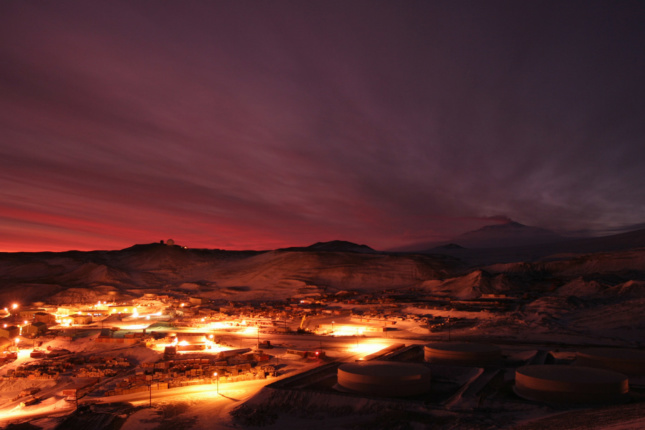
The entire station is serviced once a year by a container ship that delivers food and supplies, and a five-million-gallon diesel tanker.
The first thing that OZ corrected in their master plan was to cut the number of buildings down from 105 to 17. The new 300,000-square-foot campus will condense the dining area, gym, laboratories, living quarters, offices, post office, gym, auditorium, and food prep areas into a collection of six core buildings.
In their attempt to improve the buildings’ insulation values, OZ brought the overall ratio of window-to-facade across the campus to 11 percent, but strategically placed each window to maximize views of the wild landscape outside.
OZ arranged the programmatic elements according to temperature. Much like the human body, the coldest buildings—the warehouses—will be kept at the edge of the station at a chilly 40 degrees. Moving inwards (toward what Petersen compared to organs), the circulation spaces will be kept at 55 degrees, the dining area at 65, and the kitchen at 75.

Condensing the entire campus and expanding the station’s use of wind and solar power will likely cut the station’s energy use by half and save tens of millions of dollars. Petersen expects that the diesel tanker will only need stop by every other year after the renovation, and that up to 400 support jobs will be cut as fewer truck drivers and maintenance people will be needed.
Because this is a design-build project, OZ has designed 35 percent of each building, providing the contractors, Leidos, who took the project over from Lockheed Martin after a 2016 merger, a template to build off of. The roof of each building has been designed to resist accretion, as snow builds up on structures at a rate of 18 inches a year and several older stations have already been buried in the Antarctic. One casualty was the Buckminster Fuller–designed dome at the South Pole, which opened in 1973 and became so overloaded with ice that it was disassembled in 2010.
Instead of drilling down and pouring a foundation, each building in the new McMurdo Station will be lifted off the ground and rest on top of the Antarctic ice sheet. This way, the heat from the underside of each building won’t melt the permafrost below, and wind-driven snow won’t accumulate at their bases.
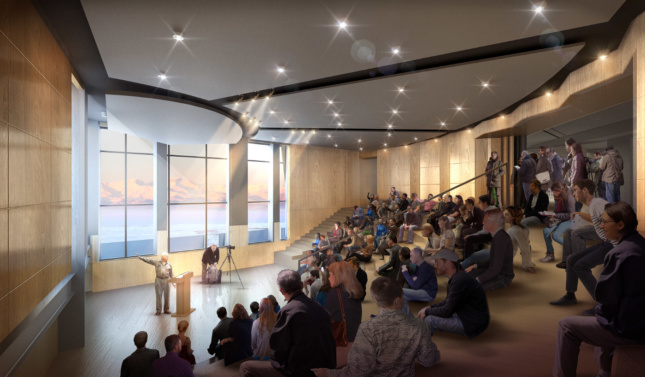
Reaching the site comes with its own set of challenges, and each building was designed to be constructed modularly using prefabricated components shipped from Los Angeles. Even the dimensions of an average shipping container were taken into consideration when designing for the site’s constraints.
Still, the overall design is liable to change, according to Ben Roth, facilities engineering projects manager at the NSF. “In the design-build process, the designer takes it to a certain point and a design-builder continues or adjusts the design and moves forward. To their credit, OZ took it to design development and conveyed to everyone the importance of the science being done in Antarctica.
“In this case, the design-builder [Leidos] is taking those documents and continuing or refining that design.”
What will happen to the rest of the base? The project has just undergone its external final design review at the NSF and assuming the funds for fiscal year 2019 are dispersed and work can continue on schedule, the renovation is expected to last eight-to-ten years. Research at the station will be continuing at full speed during the construction, which is expected to slow the process. Every attempt will be made to repurpose parts of the existing campus into the new buildings in part as cultural artifacts. Given how much effort it would be to ship off the refuse, most of it will remain preserved in place forever alongside Shackleton’s cabin.






